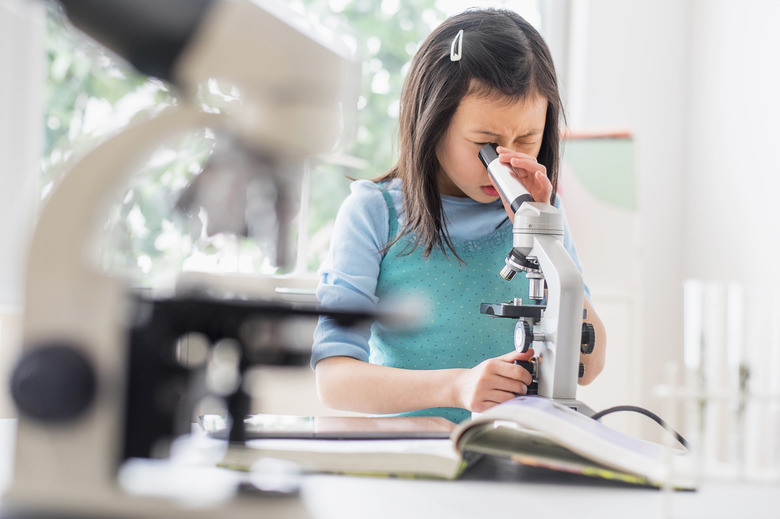Parts Of An Animal Cell For Kids
The cell is the smallest unit of life. Often, cells are microscopic and not visible to the human eye. Even though the cell is tiny, there are many parts to a living cell. These parts are called organelles and each organelle performs functions within the cell. Animal cells are different from plant cells. There are no cell walls to provide a rigid shape or chloroplasts to perform photosynthesis in animal cells. Learning about animal cell facts, such as the different parts of an animal cell, is an engaging activity and can provide a foundation for better understanding of cell anatomy and physiology in more advanced biology classes.
Animal Cell Facts
Animal Cell Facts
Cells serve as both the building blocks of all tissues and organs in an animal's body and as a command center to control the functions of the body. A simple animal cell definition is: the smallest unit in an animal than can duplicate, either by making a copy of itself or through reproduction. The parts of an animal cell are called organelles. Each organelle has specific jobs to do. Organelles work together to carry out the functions of life.
Animal Cell Information: The Nucleus
Animal Cell Information: The Nucleus
The nucleus is the large circular object present in an animal cell, and one of the first parts a child will learn to draw when creating a picture of an animal cell. The nucleus can be broken down further by including the nucleolus, which is the organelle within the nucleus that contains RNA. Some cells have more than one nucleolus. Also contained in the nucleus are chromatins, which are long strands within the nucleus. When it is time for the cell to replicate, the chromatins wind up tightly, which make up the DNA chromosome of the cell.
Endoplasmic Reticulum
Endoplasmic Reticulum
There are two types of endoplasmic reticulum (ER) within the cell: rough and smooth. Both types are responsible for transporting materials throughout the cell. Rough ER is covered in ribosomes, which give the reticulum a rough appearance. The ribosomes are the location of protein synthesis, or where proteins used in the cell are put together. Smooth ER contains enzymes, proteins and lipids, which can be used in different areas of the cell. Smooth ER buds off from rough ER.
Golgi Body and Lysosomes
Golgi Body and Lysosomes
The golgi body, also called complex or apparatus, is a sac-like body that packages proteins and carbohydrates into membrane-covered sacs for export from the cell. These small membrane-covered sacs are called lysosomes once released from the golgi body. The lysosome then connects to the cell membrane and releases the contents from inside the sac, outside of the cell.
Mitochondria and Vacuoles
Mitochondria and Vacuoles
The mitochondria are the power houses of the cell. The mitochondria convert energy store in glucose, which is a type of sugar, and convert it into adenosine triphosphate or ATP. The ATP is used up when the cell has to do work, such as divide or move if necessary. Vacuoles are organelles that are filled with fluid and remove waste products from the cell. Vacuoles are also digestive and help break down food material within the cell. To remove the waste from the cell, the vacuole combines with the cell membrane.
Cell Membrane and Cytoplasm
Cell Membrane and Cytoplasm
The cell membrane is the outermost limit of the cell. It is the barrier that determines what is inside and what is outside the cell. The membrane is made of proteins and can change forms as vacuoles and lysosomes combine to create a new membrane to expel wastes from the cell. The cytoplasm is the liquid that fills the interior of the cell. The organelles, proteins and tissues present inside the cell are all covered by the cytoplasm, which fills the cell membrane.
Cite This Article
MLA
Carpenter, Michael E. "Parts Of An Animal Cell For Kids" sciencing.com, https://www.sciencing.com/parts-animal-cell-kids-8472742/. 12 October 2018.
APA
Carpenter, Michael E. (2018, October 12). Parts Of An Animal Cell For Kids. sciencing.com. Retrieved from https://www.sciencing.com/parts-animal-cell-kids-8472742/
Chicago
Carpenter, Michael E. Parts Of An Animal Cell For Kids last modified March 24, 2022. https://www.sciencing.com/parts-animal-cell-kids-8472742/
